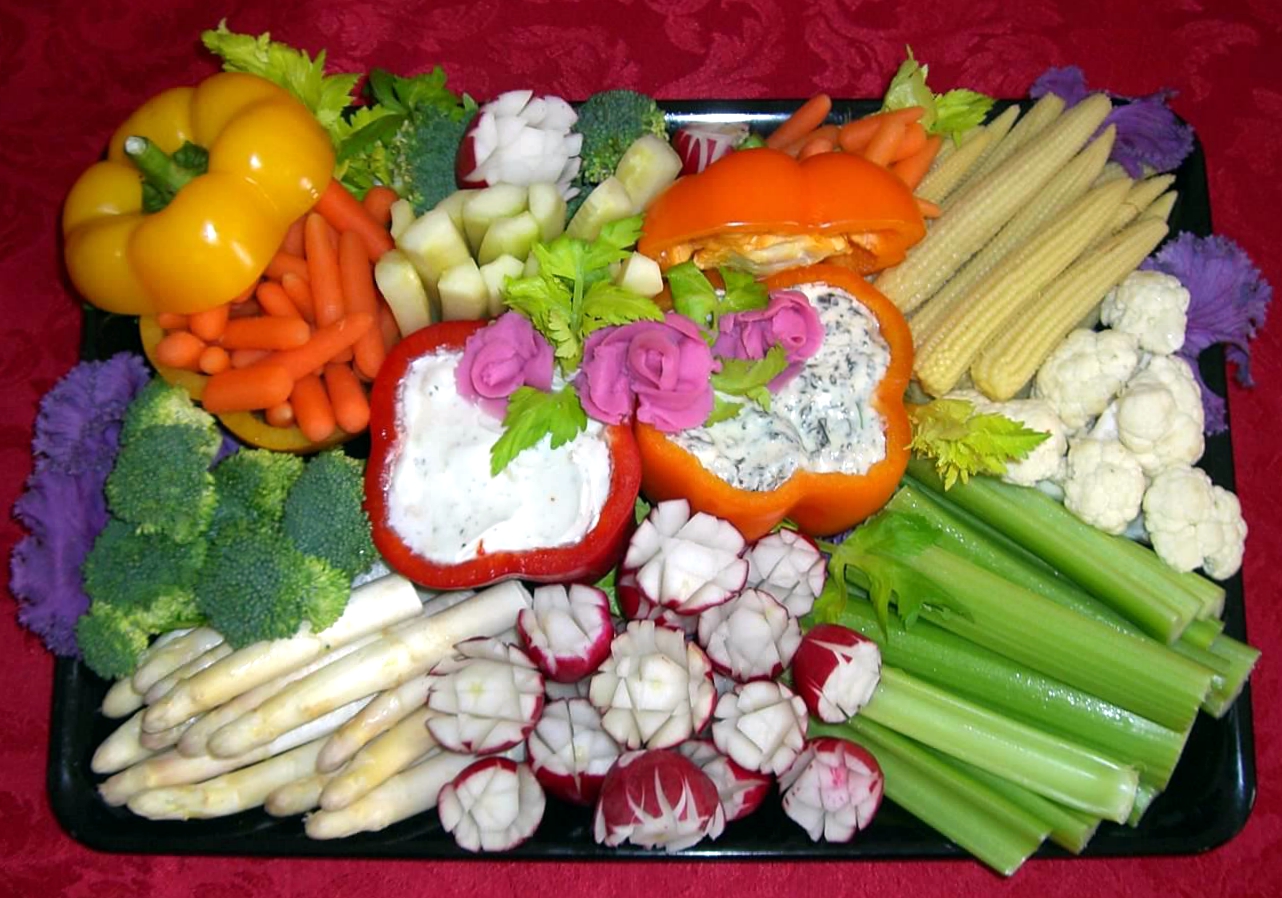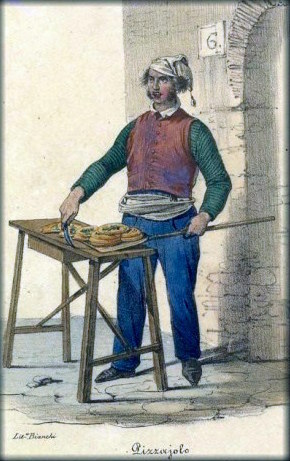|
Pissaladière
Pissaladière (, , ; or ; or sardenaira) is a dish of flatbread with toppings from the region of Provence and the French city of Niçoise cuisine, Nice. It is often compared to pizza. The dough is usually a bread dough thicker than that of the classic pizza Margherita, and the traditional topping in Nice usually consists of caramelised (almost pureed) onions, black olives (generally Olive de Nice, caillettes) and anchovies (whole, and sometimes also with pissalat, a type of anchovy paste).Julia Child (1961) ''Mastering the Art of French Cooking'' Vol. 1, Alfred A. Knopf, New York Etymology and history The etymology of the word seems to originate from the Latin ''piscis'' "fish", which in turn originated pissalat, the name of an anchovy paste (via ''peis salat'', "salted fish" Niçard). The first written recipe was found in a document of the year 879 in Provence. This old recipe included onions and pissalat, confirming that the name derives from this anchovy puré. Descript ... [...More Info...] [...Related Items...] OR: [Wikipedia] [Google] [Baidu] |
Pissalat
Pissalat or pissala, is a condiment originating from the Nice region of France. The name comes from ''peis salat'' in Niçard and means 'salted fish'. It is made from anchovy puree flavoured with cloves, thyme, bay leaf and black pepper mixed with olive oil. Pissalat is used for flavouring hors d'oeuvres, fish, cold meats, and, especially, the local specialty, pissaladière. Etymology The word ''pissala'' (in Nissard) or ''pissalat'' (in French) is composed of the old Provençal word ''peis'' for 'fish', and ''sala'', the past participle of ''salar'', which corresponds to the French ''saler'' ('to salt'). Together, they describe "preserves of small crushed and salted fish" or, similarly, "a piquant sauce made from the maceration of salted fish." History The pissalat is similar to the ''siqqu'', from the Mesopotamian Culinary Treatise of the 2nd millennium BC. J.-C. (c. 1700 BC) or with ''garum Garum is a fermentation (food), fermented fish sauce that was used as a con ... [...More Info...] [...Related Items...] OR: [Wikipedia] [Google] [Baidu] |
France
France, officially the French Republic, is a country located primarily in Western Europe. Overseas France, Its overseas regions and territories include French Guiana in South America, Saint Pierre and Miquelon in the Atlantic Ocean#North Atlantic, North Atlantic, the French West Indies, and List of islands of France, many islands in Oceania and the Indian Ocean, giving it Exclusive economic zone of France, one of the largest discontiguous exclusive economic zones in the world. Metropolitan France shares borders with Belgium and Luxembourg to the north; Germany to the northeast; Switzerland to the east; Italy and Monaco to the southeast; Andorra and Spain to the south; and a maritime border with the United Kingdom to the northwest. Its metropolitan area extends from the Rhine to the Atlantic Ocean and from the Mediterranean Sea to the English Channel and the North Sea. Its Regions of France, eighteen integral regions—five of which are overseas—span a combined area of and hav ... [...More Info...] [...Related Items...] OR: [Wikipedia] [Google] [Baidu] |
Olive De Nice
The Olive de Nice is a PDO olive The olive, botanical name ''Olea europaea'' ("European olive"), is a species of Subtropics, subtropical evergreen tree in the Family (biology), family Oleaceae. Originating in Anatolia, Asia Minor, it is abundant throughout the Mediterranean ... from the Alpes-Maritimes area of France. The rules state that they must be of the Cailletier variety, and harvest must not exceed 6 tons per hectare. References {{reflist Olives French products with protected designation of origin ... [...More Info...] [...Related Items...] OR: [Wikipedia] [Google] [Baidu] |
Appetizers
An hors d'oeuvre ( ; ), appetiser, appetizer or starter is a small dish served before a meal in European cuisine. Some hors d'oeuvres are served cold, others hot. Hors d'oeuvres may be served at the dinner table as a part of the meal, or they may be served before seating, such as at a reception or cocktail party. Formerly, hors d'oeuvres were also served between courses.''Oxford English Dictionary'', First Edition, 189''s.v.'' Typically smaller than a main dish, an hors d'oeuvre is often designed to be eaten by hand. Hors d'oeuvre are typically served at parties as a small "snack" before a main course. Etymology in French literally means 'outside the work', that is "not part of the ordinary set of courses in a meal". In practice, it is a dish which stands on its own as a snack or supports the main course. The French spelling is the same for singular and plural usage. In English, the typographic ligature is usually replaced by the digraph and two plural forms are acce ... [...More Info...] [...Related Items...] OR: [Wikipedia] [Google] [Baidu] |
Italian Cuisine
Italian cuisine is a Mediterranean cuisine#CITEREFDavid1988, David 1988, Introduction, pp. 101–103 consisting of the ingredients, recipes, and cooking techniques developed in Italy since Ancient Roman cuisine, Roman times, and later spread around the world together with waves of Italian diaspora. Significant changes Columbian exchange, occurred with the colonization of the Americas and the consequent introduction of potatoes, tomatoes, capsicums, and maize, as well as sugar beet—the latter introduced in quantity in the 18th century. It is one of the best-known and most widely appreciated Gastronomy, gastronomies worldwide. Italian cuisine includes deeply rooted traditions common throughout the country, as well as all the diverse Regional cuisine, regional gastronomies, different from each other, especially between Northern Italy, the north, Central Italy, the centre, and Southern Italy, the south of Italy, which are in continuous exchange. Many dishes that were once region ... [...More Info...] [...Related Items...] OR: [Wikipedia] [Google] [Baidu] |
Cuisine Of Liguria
Ligurian cuisine consists of dishes from the culinary tradition of Liguria, a region of northwestern Italy, which makes use of ingredients linked both to local production (such as preboggion, a mixture of wild herbs), and to imports from areas with which, over the centuries, the Ligurians have had frequent trade (such as Sardinian pecorino, one of the ingredients of pesto). Overview Liguria is known for herbs and vegetables (as well as seafood) in its cuisine. Savory pies are popular, mixing greens and artichokes along with cheeses, milk curds, and eggs. Onions and olive oil are used. Due to a lack of land suitable for wheat, the Ligurians use chickpeas in and polenta-like . The former is served plain or topped with onions, artichokes, sausage, cheese or young anchovies. Farinata is typically cooked in a wood-fired oven, similar to southern pizzas. Furthermore, fresh fish features heavily in Ligurian cuisine. (salted cod) features prominently a ... [...More Info...] [...Related Items...] OR: [Wikipedia] [Google] [Baidu] |
Pizza Varieties
Pizza is an Italian, specifically Neapolitan, dish typically consisting of a flat base of leavened wheat-based dough topped with tomato, cheese, and other ingredients, baked at a high temperature, traditionally in a wood-fired oven. The term ''pizza'' was first recorded in 997AD, in a Latin manuscript from the southern Italian town of Gaeta, in Lazio, on the border with Campania. Raffaele Esposito is often credited for creating the modern pizza in Naples.Arthur Schwartz, ''Naples at Table: Cooking in Campania'' (1998), p. 68. .John Dickie, ''Delizia!: The Epic History of the Italians and Their Food'' (2008), p. 186.Father Giuseppe Orsini, Joseph E. Orsini, ''Italian Baking Secrets'' (2007), p. 99. In 2009, Neapolitan pizza was registered with the European Union as a traditional speciality guaranteed (TSG) dish. In 2017, the art of making Neapolitan pizza was included on UNESCO's list of intangible cultural heritage. Pizza and its variants are among the most popular foods ... [...More Info...] [...Related Items...] OR: [Wikipedia] [Google] [Baidu] |
Cuisine Of Provence
The cooking of Provence is based around fresh, local produce including garlic, olive oil, tomatoes, fish, vegetables, fruit, and goat's cheeses. Meat and poultry also feature, but are generally of secondary importance.Friedman, p. 60 The cuisine of Provence is long established but has changed considerably over the centuries. Traditional rural life depended on three major crops – wheat, grapes and olives – which, with sheep farming, together with a variety of other local products such as almonds and herbs, sustained an agricultural economy of small farms. Although this traditional polyculture has largely disappeared, replaced by modern, large-scale agriculture, Provence remains, in the words of the ''Michelin Guide'', "the garden of France". With a sunny climate and suitable soil, Provence produces a wide diversity of vegetables and fruits throughout the year, providing the basis for a varied and seasonal cuisine. The ''Michelin Guide'' lists as Provençal specialities strawber ... [...More Info...] [...Related Items...] OR: [Wikipedia] [Google] [Baidu] |
French Cuisine
French cuisine is the cooking traditions and practices of France. In the 14th century, Guillaume Tirel, a Court (royal), court chef known as "Taillevent", wrote ''Le Viandier'', one of the earliest recipe collections of medieval France. In the 17th and 18th centuries, chefs François Pierre La Varenne and Marie-Antoine Carême spearheaded movements that shifted French cooking away from its foreign influences and developed France's own indigenous style. French cheese, Cheese and French wine, wine are a major part of the cuisine. They play different roles regionally and nationally, with many variations and ''appellation d'origine contrôlée'' (AOC) (regulated appellation) laws. Culinary tourism and the ''Guide Michelin'' helped to acquaint commoners with the ''cuisine bourgeoise'' of the urban elites and the peasant cuisine of the French countryside starting in the 20th century. Many dishes that were once regional have proliferated in variations across the country. Knowledg ... [...More Info...] [...Related Items...] OR: [Wikipedia] [Google] [Baidu] |
Menton
Menton (; in classical norm or in Mistralian norm, , ; ; or depending on the orthography) is a Commune in France, commune in the Alpes-Maritimes department in the Provence-Alpes-Côte d'Azur region on the French Riviera, close to the Italian border. Menton has always been a frontier town. Since the end of the 14th century, it has been on the border between the County of Nice, held by the Duchy of Savoy, Duke of Savoy, and the Republic of Genoa. It was an exclave of the Principality of Monaco until the disputed French plebiscite of 1860 when it was added to France. It had been always a fashionable tourist centre with grand mansions and gardens. Its temperate Mediterranean climate is especially favourable to the citrus industry, with which it is strongly identified. Etymology Although the name's spelling and pronunciation in French language, French are identical to those for the word that means "chin", there does not seem to be any link with this French word. According to th ... [...More Info...] [...Related Items...] OR: [Wikipedia] [Google] [Baidu] |
Pizza Al Taglio
or () is a variety of pizza baked in large rectangular trays, and generally sold in rectangular or square slices by weight, with prices marked per kilogram or per 100 grams. This type of pizza was invented in Rome, Italy, and is common throughout Italy. Many variations and styles of exist, and the dish is available in other areas of the world in addition to Italy. Preparation In the most traditional Italian shops, such as pizzerias and bakeries, pizza is often cooked in a wood-fired oven. In today's establishments, electric ovens are also often used. The rectangular pizza shape makes it easier to cut and divide the pizza to the buyer's desire, which is often distinguished by weight. The dish is often eaten as a casual, takeaway dish that is eaten outside the restaurants where it is served, such as in a piazza A town square (or public square, urban square, city square or simply square), also called a plaza or piazza, is an open public space commonly found in the hea ... [...More Info...] [...Related Items...] OR: [Wikipedia] [Google] [Baidu] |





